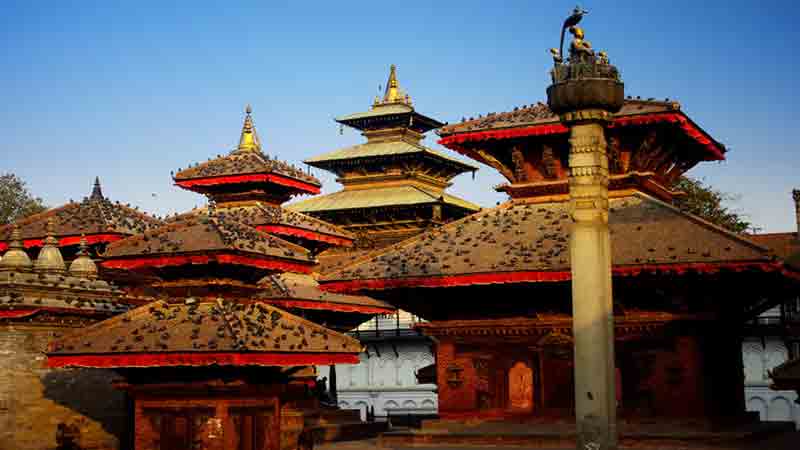Kathmandu Durbar Square, renowned as Basantapur or Hanumandhoka Durbar Square, stands as a testament to Nepal’s rich cultural heritage and architectural prowess. Situated in the heart of Kathmandu, this UNESCO World Heritage site holds deep historical significance.
The origins of Kathmandu Durbar Square date back to the 3rd century during the Licchavi period when it served as the royal courtyard for kings. Over the centuries, it evolved as the political and cultural center of the Kathmandu Valley. The square saw its golden era during the Malla Dynasty rule (12th to 18th century), when exquisite palaces, temples, and courtyards were built, showcasing Newar craftsmanship and architectural excellence.
One of the prominent structures within Kathmandu Durbar Square is the Taleju Temple. Dedicated to Goddess Taleju Bhawani, the temple symbolizes the amalgamation of Hindu and Buddhist architectural styles. Originally built in 1564 by King Mahendra Malla, it underwent several renovations and expansions, reflecting the religious fervor and patronage of the Malla rulers. The temple’s three-tiered pagoda-style architecture, adorned with intricate woodcarvings and metalwork, remains a masterpiece of Newar artistry.
Beyond its architectural splendor, Kathmandu Durbar Square is a cultural hub where religious rituals, festivals, and traditional practices are preserved and celebrated. The square’s open courtyards and temples host various religious ceremonies, including the Indra Jatra and other festivals that draw locals and tourists alike.
In 1979, Kathmandu Durbar Square was designated as a UNESCO World Heritage site, acknowledging its outstanding universal value. The inscription recognizes its role as a living museum of Nepal’s history, art, and culture, making it a must-visit destination for travelers seeking to immerse themselves in the country’s rich heritage.
Despite its cultural significance, Kathmandu Durbar Square faces challenges such as urbanization, environmental factors, and the aftermath of natural disasters like the 2015 earthquake. Efforts by local authorities and international bodies focus on conservation and restoration projects to safeguard this invaluable cultural treasure for future generations.
Kathmandu Durbar Square, with its Taleju Temple and myriad historical structures, stands as a testament to Nepal’s enduring cultural legacy. Beyond its architectural beauty, it serves as a vibrant center of religious and cultural practices, embodying the essence of Nepali identity. As Nepal continues to evolve, preserving and promoting sites like Kathmandu Durbar Square remains crucial in nurturing national pride and heritage conservation efforts.






